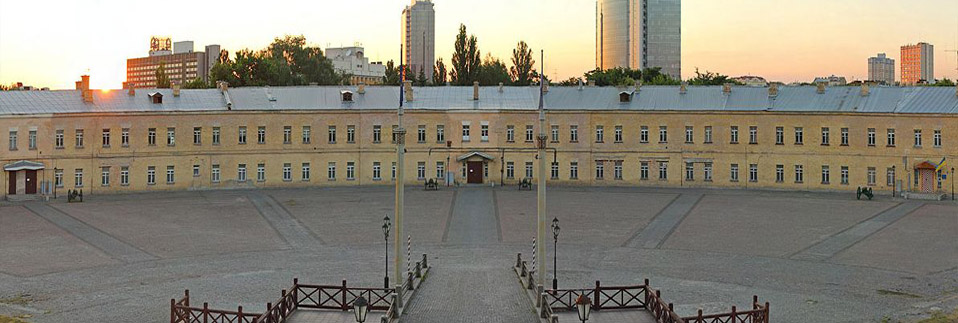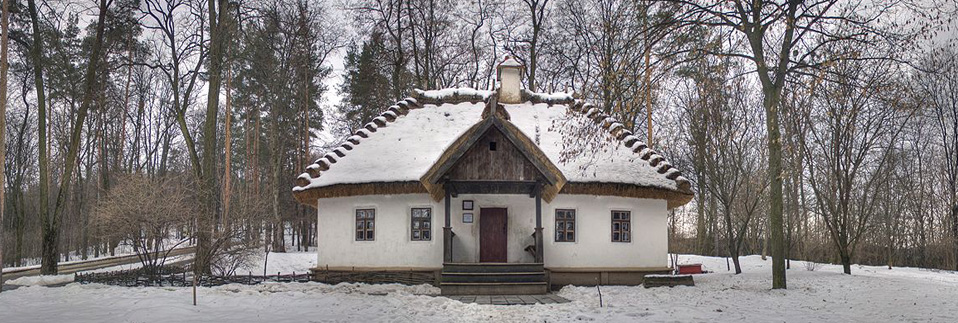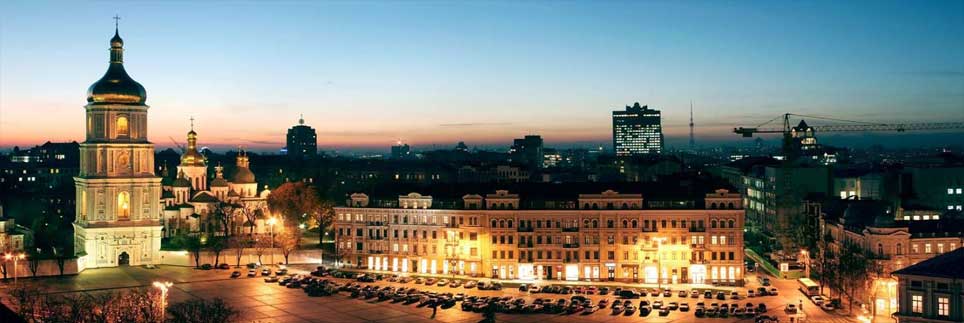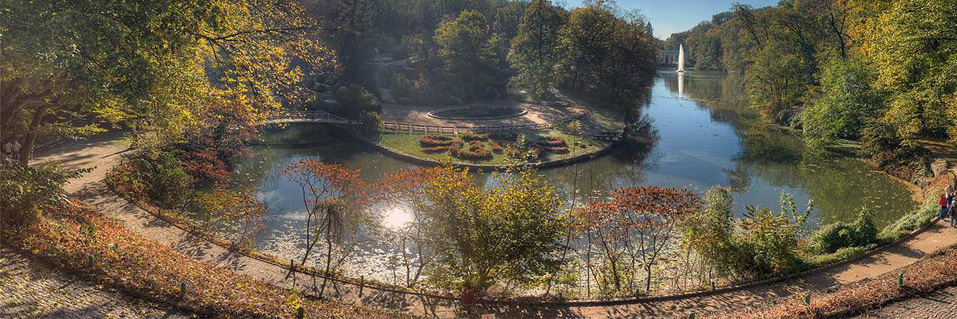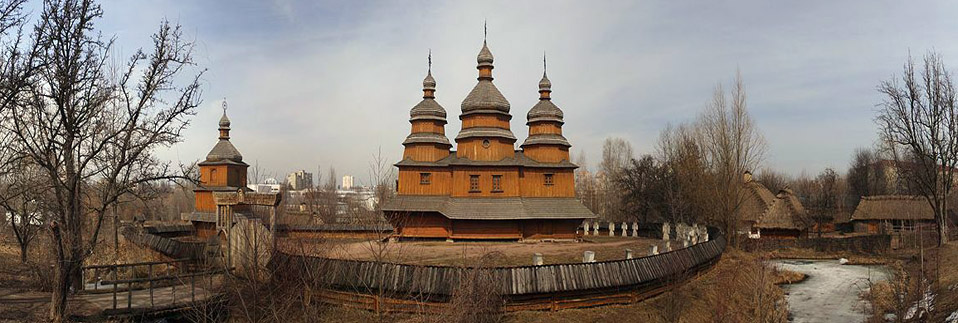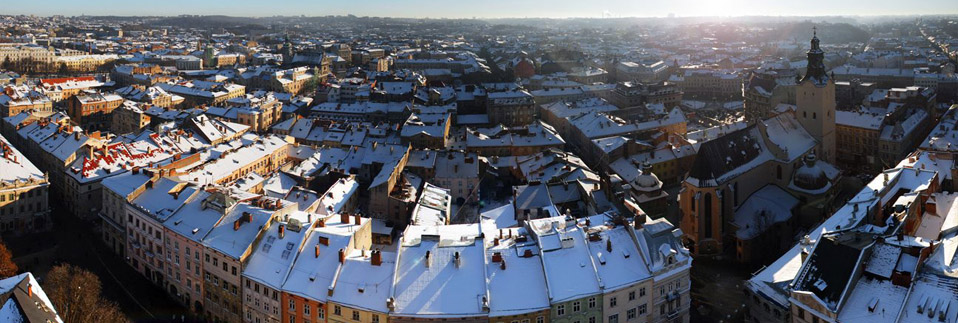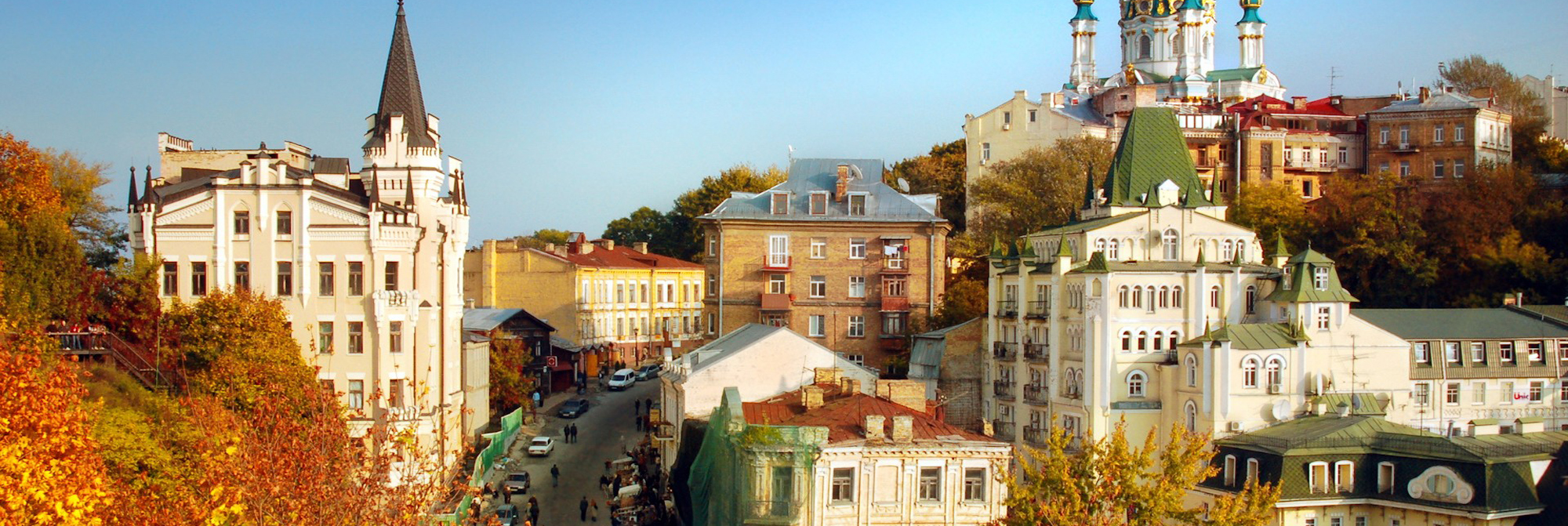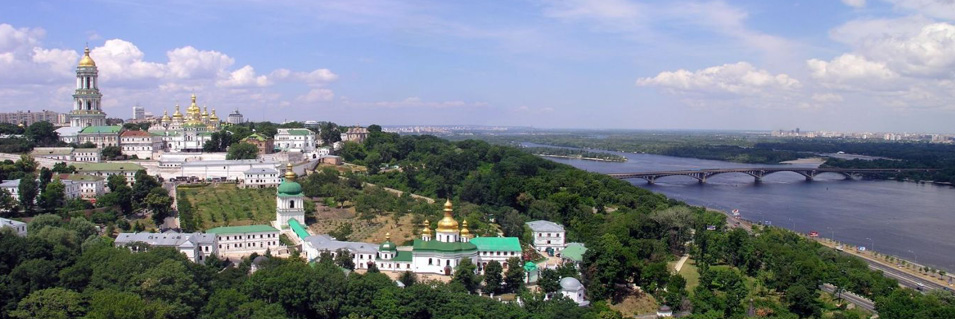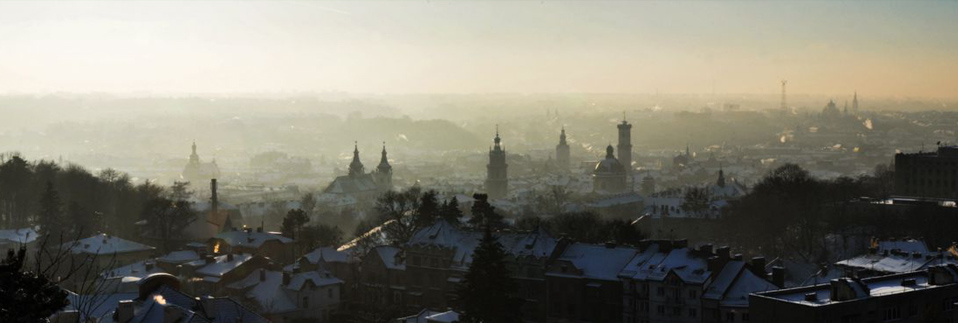Lvov
City tour of Lvov (Lviv)
 "The city of Lions" is the heart and soul of the Western Ukraine with a population of over 1 million. Prince Danylo built this city in 1256 and named it after his son Lev ("lion"). One can notice the prevalent lion adornments throughout the Renaissance architecture of city of 15th - 16th c.c. The tourists visit Vysokyi Zamok (High Castle) hill with an unforgettable panorama of the entire city. En route from the hill the tourists pass the Porokhova Bashta (Gunpowder tower, now the Arsenal Museum). The old part of the city is preserved as a living museum. Rynok (Market) or Central Square, in particular is architecturally exciting with its famous Ratusha (city hall).
"The city of Lions" is the heart and soul of the Western Ukraine with a population of over 1 million. Prince Danylo built this city in 1256 and named it after his son Lev ("lion"). One can notice the prevalent lion adornments throughout the Renaissance architecture of city of 15th - 16th c.c. The tourists visit Vysokyi Zamok (High Castle) hill with an unforgettable panorama of the entire city. En route from the hill the tourists pass the Porokhova Bashta (Gunpowder tower, now the Arsenal Museum). The old part of the city is preserved as a living museum. Rynok (Market) or Central Square, in particular is architecturally exciting with its famous Ratusha (city hall).
While touring the Old Town the tourist can see the St.Nicholas Church, the Dominican Church and the Church of Onufriy - at present the Museum of Ivan Fedorov (the first book-printer). This city boasts of Italian Renaissance, German Baroque and Polish influences in its architectural sites. One will be delighted by the visit to the newly renovated Opera House and the Ukrainian Drama Theatre named after Maria Zankovetskaya. St.George Cathedral is a fine example of the Rococo style. Enjoy yourself by a stroll through the lovely Stryjskyi Park and do not miss the Lychakivskyi and Yanivskyi Cemeteries. During its 600 years history it was many times that the power in the city changed, also its names changed: Leopolis, Lemberg, Lwow, and Lviv.
The Lvov Region is the main tourist centre of the Western Ukraine. Here you can see monuments of different epochs. On the territory of the Lviv Region there are ski centres of the European level in Slavskoye and Tysovets. Morshin and Truskavets are the famous spa and health resorts.
Ukrainian national museum
 The museum represents one of the largest collections of ecclesiastical art in Ukraine (more than 10,000 exhibits). The oldest icons date back to the 14th century. A rich collection of Ukrainian handicrafts dating from 17th-20th centuries. One can find here several works of T.Shevchenko, many works by Trush, Novakivsky etc. The museum is located in a very peculiar building (dating back to 1905) which itself looks like an experiment in architecture combining various styles in one building.
The museum represents one of the largest collections of ecclesiastical art in Ukraine (more than 10,000 exhibits). The oldest icons date back to the 14th century. A rich collection of Ukrainian handicrafts dating from 17th-20th centuries. One can find here several works of T.Shevchenko, many works by Trush, Novakivsky etc. The museum is located in a very peculiar building (dating back to 1905) which itself looks like an experiment in architecture combining various styles in one building.
Historical museum
 The Museum is located in the medieval four houses on Rynok (Market) Square. One of this buildings was the former residence of King Janusz III Sobetski. The museum is a history itself - more than 100 years since its foundation. About 350 000 exhibits tell about rich city history of Lviv and this region since 1256. Some relics and collections are of the world value including a manuscript of "The Christianopil Book of the Apostles" ,12 c), documents of F.Chopin (his autographs and lifetime portraits), rare items representing the process of the formation of Ukraine independent state.
The Museum is located in the medieval four houses on Rynok (Market) Square. One of this buildings was the former residence of King Janusz III Sobetski. The museum is a history itself - more than 100 years since its foundation. About 350 000 exhibits tell about rich city history of Lviv and this region since 1256. Some relics and collections are of the world value including a manuscript of "The Christianopil Book of the Apostles" ,12 c), documents of F.Chopin (his autographs and lifetime portraits), rare items representing the process of the formation of Ukraine independent state.
Address: 4,6,24, Rynok Sq.
Shevchenkivskyi Hai (The museum of folk life and architecture - scansen)
 This scansen represents an open-air museum of the Ukrainian wooden architecture and different utilities of the village life. It is situated in Shevchenkivskyi Hai (forest) - one of most picturesque sites of Lviv. More than 10 thousand of craft-items from various ethnographical regions of the Western Ukraine can be found in this museum. The visitors can feel the unique atmosphere of picturesque Ukrainian villages. The gems of this museum are the wooden churches from the Carpathian region - the most exquisite examples of Ukrainian wooden architecture.
This scansen represents an open-air museum of the Ukrainian wooden architecture and different utilities of the village life. It is situated in Shevchenkivskyi Hai (forest) - one of most picturesque sites of Lviv. More than 10 thousand of craft-items from various ethnographical regions of the Western Ukraine can be found in this museum. The visitors can feel the unique atmosphere of picturesque Ukrainian villages. The gems of this museum are the wooden churches from the Carpathian region - the most exquisite examples of Ukrainian wooden architecture.
Address: 1, Chernecha Hora.
 The only one of its kind in Ukraine this museum is a "must" for everyone who is interested in local customs and traditions. It represents unique collections of ceramics, woodcarving, embroidery, carpet weaving, glass-blowing and metal-work of craftsmen of Lviv, the Hutsul region and other Western regions of Ukraine. All in all there are more than 83 000 exhibits.
The only one of its kind in Ukraine this museum is a "must" for everyone who is interested in local customs and traditions. It represents unique collections of ceramics, woodcarving, embroidery, carpet weaving, glass-blowing and metal-work of craftsmen of Lviv, the Hutsul region and other Western regions of Ukraine. All in all there are more than 83 000 exhibits.
Special guided tours
- Jewish Heritage Tour - within the city limits of Lvov.
- Zhovkva - Velyky Mosty - Belts (Yewish Heritage Tour).
- The visit to the towns of Nahujevytchi (birth place of Ivan Franko), Drohobych and Truskavets.
- Berestechko-Kozatski "mohyly" (graves).
- Zhovkva-Krehivskyi monastery.
- Monasteries and castels of the Western Ukraine
Oleskyi castle

The Castle is a real object to note and it is located in the village of Olesk, 75 km from Lvov along the highway to Kiev. It is a monument of the 14th -17th cc. architecture and contains a rich collection of paintings, sculpture and furniture from the 16th - 19thcc. that attracts tourists.
The first mention of the castle in the historical sources dates back to 1327. At that time the Castle-fortress towered over the surrounding swamps. The walls were 10 meters high and 2,5 meters thick. The research workers are of the opinion that the castle was built by an offspring of Danylo Galytsky - one of his sons Andryi or Lev. For centuries the Oleskyi castle played an important role in the people's fight against the enslavers.
From hall to hall the exposition unfolds like the rolls of chronicles. Every hall is a museum exhibit in itself. The museum numbers about 500 works of painting, sculpture and applied arts.
Zolochivsky Castle
Zolochivsky Castle

Zolochivsky Castle is a construction reflecting typical European military architecture and has not had significant reconstruction for centuries.
Built in 1630 like a citadel with bastions, it's surrounded by barrages. In the castle's courtyard there is the Great Palace built in late Renaissance style and the Chinese Palace built by Jan III, the King of Poland, for his wife Maria Kasimira de Arcunion.
Excursion to Zhovkva

The city has very rich and interesting history, related to life and activity of famous historical persons. There were private residencies of the crown hetman Stanislaw Zolkiewski and the King Jan the Third Sobieski, the military headquarter of Russian Tsar Peter the First, place of born and childhood of the Ukrainian Hetman Bohdan Khmelnitsky – establisher of Ukrainian State in XVII century. Zhovkva is the only example in Ukraine saved Renaissance “Ideal” city-citadel, the real pearl of national architecture heritage. Today on the small territory of the city, there are present two monuments of city house building, 55 architecture’s monuments on world, national and regional level, two monuments of landscape architecture, 15 historical monuments.


